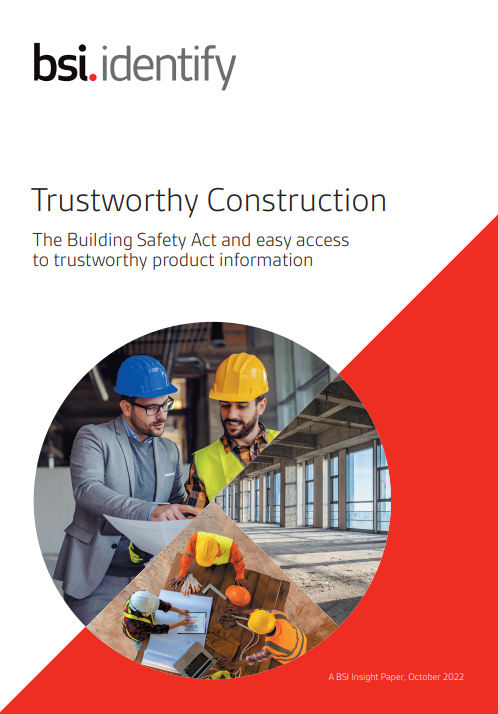The need to be tender
Author: Dan Rossiter, Built Environment Sector Lead, BSI
It can be said that the chosen procurement strategy is the most significant factor in the success of a construction project. A well-developed strategy can ensure that the right suppliers are selected whose morals, ethics, and values are aligned to your own. In addition reports, such as those by the Get It Right Initiative Research Report, show that contractual arrangement and excessive commercial pressures are two of the most significant roof causes of errors on projects.
Traditionally we have seen a myriad of reports highlight the issue with how construction works are procured; focused more on cost than quality. While this blog isn’t intended to serve as an exhaustive list, there are references as early as Constructing the Team (1993) and as recent as The Construction Playbook (2022) around this issue and the need for change. As quoted from the construction playbook:
“One of the most effective ways to deliver outcomes is to create sustainable contracting environments that promote collaboration and reduce waste.”
Most recently, a tool to encourage change has come in the form of the Construction Innovation Hub’s Value Toolkit. The Value toolkit aims to support contracting authorities (clients) to select the most appropriate proposal through value-based decision making. This is done through the establishment of a value scorecard, highlighting the social, environmental, and economic outcomes that the contracting authority and their stakeholders which to realize. Such an approach can improve not only the outcome of single projects, but also the outcome of programmes of work under a framework, as discussed within Constructing the Gold Standard (2021).
Whilst this may sound novel, it is however a practice that BSI has helped champion for over a decade. Throughout BSI’s portfolio of over 55000 standards, there is a committee dedicated to construction procurement (CB/500). CB/500 have produced several key construction procurement standards, one of which being BS ISO 22058 (Construction procurement. Guidance on strategy and tactics).
BS ISO 22058 provides guidance on market engagement, the development of procurement strategies, and the formalization of procurement tactics. In doing so, it asks the procurer to consider procurement objectives (BS ISO 22058, 5.3) and provides guidance about how such objectives can support the promotion, and realization, of sustainable development objectives. In addition, the document also provides guidance around Organizational (BS ISO 22058, 5.4.3), Market (BS ISO 22058, 5.4.4), and Stakeholder (BS ISO 22058, 5.4.5) analysis to inform the procurement strategy.
Thankfully these bodies of work can be coalesced and used in tandem. Through the Construction Innovation Hub’s sponsored Flex Standard Flex 390, the requirements relating to establishing outcome drivers (Flex 390, 6) which inform the establishment of a value scorecard (Flex 390, 7) are provided. These outcome drivers are equivalent to procurement objectives within BS ISO 22058. This relationship between these bodies of work has been alluded to within the introduction of Flex 390 and is expected to be made more clear in a future iteration of Flex 390.
So, before you begin to develop your next invitation to tender, consider establishing a value scorecard to help you to determine the value you want the project to realize as well as how it can inform the criteria you procure against. As opposed to the hard and fast rules of lowest-cost, we can all benefit from being a little more tender with our requirements…

Trustworthy Construction
Discover more about ''The Building Safety Act'' and the benefits of accessible product information. Download our whitepaper to learn more about the new building safety landscape and the consequences of non-compliance.
